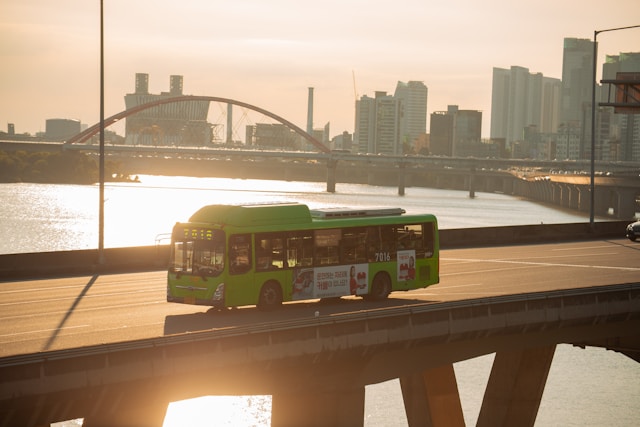
For many newcomers in Seoul, one of the first and most difficult challenges they must overcome is navigating around the massive city of nearly 10 million people. While South Korea is known internationally for its efficient and convenient public transportation, it is still a daunting task for those new to the system. However, after reading this article, you, too can become an expert at navigating the expansive and lively city of Seoul!

The public transportation system in Seoul consists of two main parts: the subway system underground and the bus system above ground. These systems seamlessly interface with South Korea’s most popular navigation app, Naver Map. The first step in getting anywhere in Seoul is to open Naver because Google Maps does not function well in Korea (so download it if you haven’t). First opening Naver can be a bit scary as initially, it is completely in Korean, however, going into settings there is an option to change the UI to English. After completing this, I recommend creating your own Naver account. This allows you to save your favorite locations, as well as see your own location and direction on the map.


After creating your account, you are ready to start using the app. At the top of the screen, there is a search bar where you can enter whatever location you are looking to go to. An important thing to note is that many locations in Naver are only listed under their Korean name, therefore, searching for them in English can yield undesired results. To avoid this, I recommend looking up the location you want on Google, copying its Korean address or name, then pasting that into Naver for navigation.
As stated previously, the public transportation system has been well-integrated into the app itself. Once a destination is put in, the app offers a multitude of different options for how to travel based on the shortest time, lowest price, or least number of transfers. Once having selected the route you wish to take, it’s time to use public transportation. Another app I highly recommend downloading is Subway Korea, a live map of the subway systems throughout Korea. This app will help you determine what stations you must get on and off at and where to transfer.
The next step is getting on the subway or bus, depending on the route you are taking. To do this, many foreigners use a T-Money card. These are rechargeable transportation cards that are used for all public transportation like subways, buses, or taxis and can even be used at some convenience stores. They can be bought at most convenience stores for only ₩3,000 (~$2.20 USD). It is also possible to buy tickets every time a passenger wishes to use the subway, but this is more expensive and time-consuming. With the card, travelers can add money by asking a convenience store clerk or at machines within all subway stations. The average one-way fare is about ₩1,450 (~$1.05 USD), but the fare can increase based on the number of transfers, distance, or type of bus.
Armed with your T-Money card, getting on public transportation is easy; for the subway, simply tap your card on the kiosk and walk through the gate. On the bus just scan your card when you get on the bus. One important thing to remember is that you MUST tap your card when getting off of the subway or bus, like when getting on. If you do not, you will be charged extra.
For the subway specifically, some of the signs can be confusing, but as long as you know what line number you are getting on (using the Subway app) you should be alright. Before getting on, above the subway doors, the current station, last station, and next station are written, so be sure to check you are going in the right direction. Furthermore, when the arriving trains are announced, be sure to listen for the final station where everyone must get off.

For the bus, remember to be quick, as the bus drivers open and close the doors very quickly and will not wait for you to walk to the door. Try and be up and ready to get before you reach your stop. To indicate you want to get off, there are buttons throughout the bus with the word “Stop” written on them, simply press one, and the bus will stop at the next stop.
And there you have it! You are now ready to navigate Seoul all on your own. The most important thing now is to practice for yourself. In no time, getting around will be no problem at all and you will be free to explore Seoul unrestricted!










